I want to help you build a sustainable, profitable handmade business that makes you consistent income and sales. I only ever teach or recommend marketing, social media, pricing, production and branding tips that I’ve personally used successfully in my own 7-figure handmade businesses.
I'm Mei, from Los Angeles!
Read More
Popular Posts You'll Love
Looking for something?
Categories
starting a business
get more traffic
running a business
make more sales
branding
growing a business
mindset & productivity
podcasts
pricing & money
product photography
reviews
selling on etsy
selling on amazon
social media
selling wholesale
- Facebook1
- Twitter1
- Pinterest9
- 11shares
If you want to sell your handmade products to small retail stores, you need to read this post first where I’m going to share with you six things you need to know so that you can set yourself up for success and make a ton of sales and money selling wholesale.
1. Pricing
The first and most important thing you need to know is your pricing.
One of the biggest things that I see new handmade business owners do is not knowing how wholesale pricing works.
If you’re thinking about selling your products wholesale then you’re being proactive by reading this post and doing your research. If you’re fairly new in business, maybe you’ve even had a brick and mortar store buyer approach YOU to ask you about your wholesale information, then you might start panicking and do a YouTube search on how to do it.
When you start doing wholesale, store buyers are going to expect your wholesale prices to be at least 50% of your regular retail prices.
If you sell a t-shirt for $28, stores expect you to sell them for $14 wholesale to them, if not less.
If this is the first time you’re hearing this, it might sound like a huge decrease in your prices. Don’t forget, the reason for this is because these store buyers have to make a profit too. They’re buying your products with the purpose of reselling them to their own store customers.
You might be wondering why it has to be such a huge cut. It’s because running physical stores are extremely expensive.
For those of us who are solely online business owners, we’re really lucky. You don’t have to pay for:
- rent for a space
- electricity
- other utility bills for a separate building other than your home
- employees to help manage your store
- expensive insurance or business licenses.
I have a friend who’s in the restaurant business and granted, restaurants are in their own special category of business, but he told me that most restaurants go out of business after the first year.
He’s in his third year and he’s only breaking even, in large part because he has to pay off a lot of loans from when he started the business.
What will help your wholesale deal go so much more smoothly and successfully is just by putting yourself in the shoes of your wholesale customers.
They need to make money too.
Right off the bat, I’ve had so many people reach out to me telling me how they were approached for the first time by a wholesaler and they didn’t know what to tell them, so they just said their prices were 25% less than their retail pricing, and that they hoped that was okay.
That’s not enough and it’s likely you’re going to turn away the wholesale customer.
This 50% is not a number I made up, it’s the industry standard. Some different categories of products have slightly different percentages, but the general number is 50%.
The larger the store, like say you work with a department store or a store that has multiple locations or a franchise, they’re going to want even lower prices from you.
I’ve had to go as far as 80% of my retail prices, which sounds way too low, but of course, this was for an order that was over $10,000. So ultimately, I was still profitable.
The way wholesale works is you’re not as profitable per item, but you can be more profitable as a whole for the entire order because wholesale stores are required to buy your products in volume.

2. Production
The second thing you need to know when selling to small retail stores is, can you handle production?
Depending on what you make, selling wholesale may not ever be something you do in your business. If you’re able to create a product or a special collection in your shop that’s just for wholesale buyers, selling wholesale is a great way to grow your business and have a new stream of income.
It really helps diversify where your money is coming from, and it helps with that roller coaster feeling with your business and not knowing when your next sale is going to come in because sales aren’t consistent for you.
The more income streams you have, the less this becomes a problem.
So production; can you handle making your product in volume? And if you can’t just yet, that’s okay. Most of us starting out aren’t thinking about making our products in quantity like that.
What I recommend is that you start thinking about how to make your products in a faster way.
One idea for you that will instantly save you time making your products is by doing them in an assembly line style. Instead of making one product from start to finish in one sitting, you would break up your product design into as many different, separate steps as possible.
Say you were to make an order of 20 of your products, you would do the first step for all 20 of your products. Then, the second step for all 20. Then the third and so on.
It’ll obviously take you more time to make 20 products than to make just one, but overall you’ll be spending less time per product doing it this way.
3. Branding
Third, you need to have really good branding. That means good photos and a cohesive product line. This is something I’ve heard really appeals to store buyers.
If you were to email a store buyer, this can be what makes them email you back versus not responding to your email at all.
What’s interesting is while I have heard that it helps to have already had success of your own selling in your own website, having gotten your own press, having a social media following, while all of that does help you become slightly more attractive to wholesale buyers, I have also seen many businesses that have none of those things and almost even zero online presence, but their entire business is built off of just selling wholesale.
Those things help, but you don’t need them.
All you need is a good product and you have a line of product designs that are cohesive, where there’s a similar common thread or style bringing them all together, and you have beautiful photos of your work, that’s going to make selling to stores a lot easier for you.
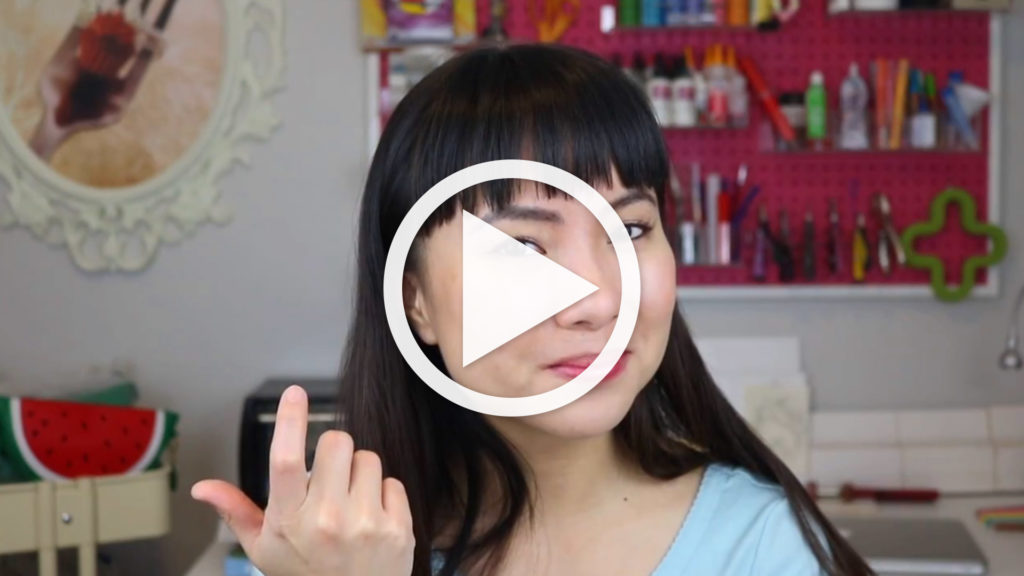
4. Display
The fourth thing to know is how are your products going to be displayed in the stores?
If you sell t-shirts, they’re probably going to be put on hangers on a clothing rack. If you sell jewelry, your products might go in a glass case. Every product and brand is different and to ensure your success selling wholesale, you want to think about this now.
Your product’s packaging and how it’s displayed is so important because if the display isn’t attractive, customers won’t be interested to look at your products and the store isn’t going to sell any of your work.
And you want them to sell your products. You want the stores to make money from your work, so they run out of your stuff and come back to make more orders from you.
Some stores will take the responsibility of thinking about how to best display your products. They usually have their own collection of different display racks and cases and tables they can use. But I’ve sold my jewelry in over 100 stores, and I can tell you that you’re going to have a much easier time selling your products when you make the buyer’s life easy by having an all-in-one solution if they bought from you.
This means, put your products in packaging if they need it, and offer to sell them display units to hold all your products together.
The display unit doesn’t have to be expensive, I offer white display racks to my retailers for free when they’ve bought over $300 of jewelry, and I buy them from Palay Display for about $6 per rack.
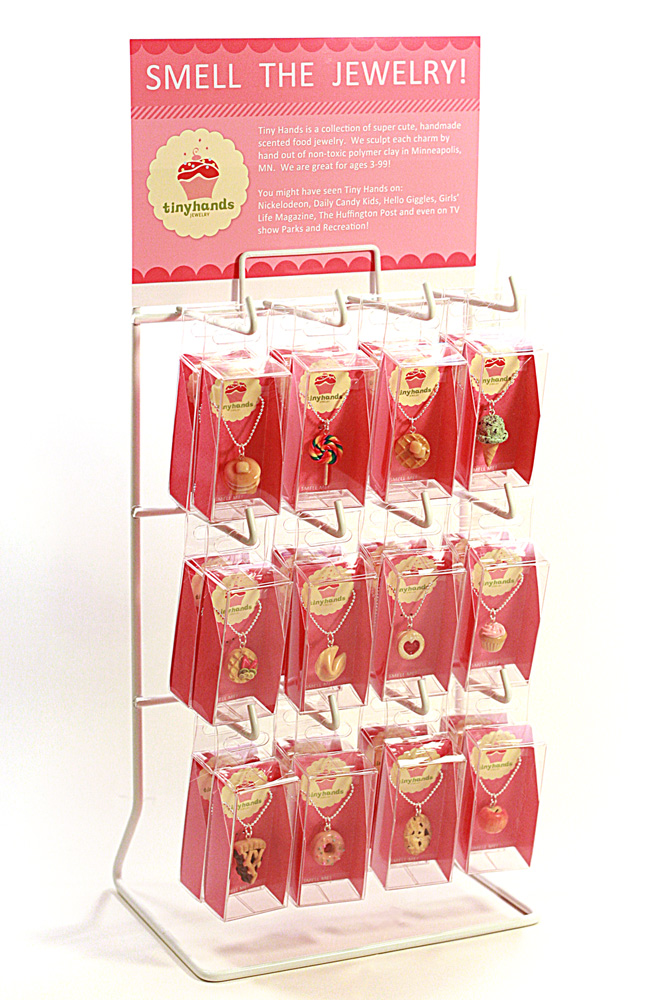
And if you’ve watched my videos, you might know that I have different packaging for my jewelry depending on when I’m selling to an online customer or if I’m selling to a store.
When people buy my products online, they’re buying them usually as gifts for other people, so I gift box all orders.
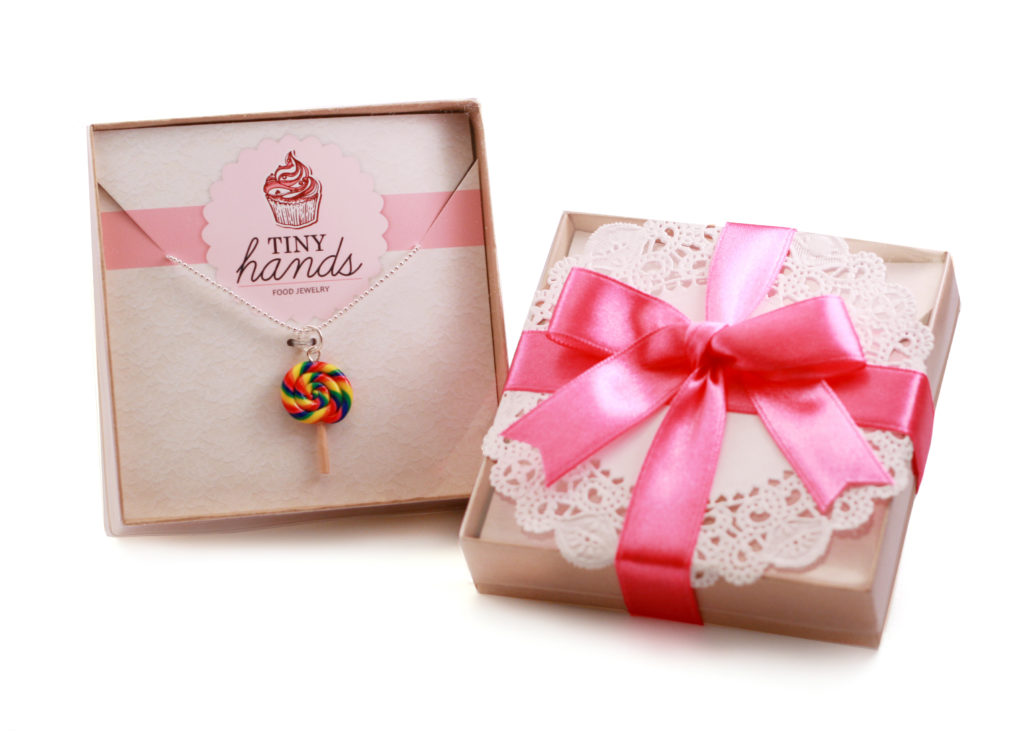
All the jewelry goes into boxes with a ribbon tied on top. Obviously this wouldn’t work in a physical store setting because people need to smell, see and look at the jewelry, so I put them in clear boxes that hang on my display rack instead.
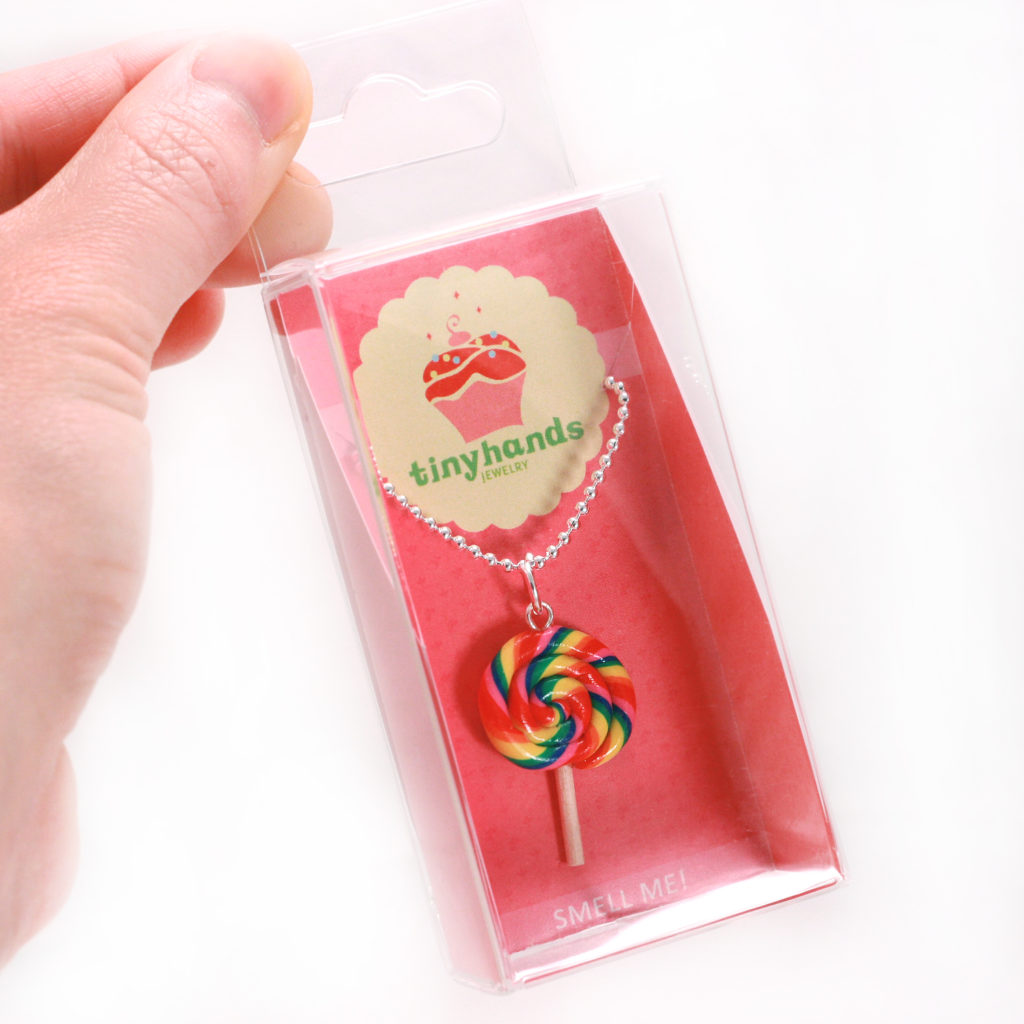
So think about how your products should best be displayed in a store that will make them easier to sell then spend some time creating your packaging for wholesale.
5. Persistence
You have to be very persistent when you’re selling your products to small retail stores.
Don’t forget, when you’re approaching a store buyer to buy your products, you’re making a really big ask.
Let’s put yourself in the buyer’s shoes.
You’re asking them to take a risk with you, pay you money for products they’re not sure is going to sell. They have no guarantee that they will make money from your products.
It’s a big decision for them.
If you don’t hear back from a store buyer, whether they approached you first or you approached them, don’t take that as a sign that they don’t want to ever buy from you. Store buyers have a limited budget to shop around with and it also depends on the season and what other products that they are already selling that they want to make reorders for.
Sometimes the timing ends up being not so great, but that doesn’t mean they’re not going to buy from you later, six months, one year or two years later, even.
Keep in touch with them, follow up with them every few months. Tell them about new designs you have, just keep them in the loop so you’re fresh and front of mind in their heads.
Many times when you reach out to stores, you’re probably never going to get a response, and for good reason: everything I said above, but also because you’re not the only one reaching out to them.
They probably have a ton of other shops emailing them to ask if they’ll carry their products.
The way you’ll stand out is by being persistent.
You can also offer to send the buyer free samples of your work.
Remember how I said the risk is all in the buyer? Help share in that risk if you want this to work. By offering them samples of your products, they get to experience them first hand and if you’ve ever done craft shows well but struggle to sell online, your products do better in person when people have a chance to touch it, feel it, wear it, smell it.
Also consider offering generous returns, exchange, and refund policies.
You want to make the buyer’s life easy and make them feel like working with you won’t be a risk.
I offer a 100% happiness guarantee, where I’ll refund their order completely if the store can’t sell 30% of what they bought from me in three months.
This shows the buyer how confident I am with my products, but it also gives them comfort and support in knowing that they have a plan B in case your products don’t sell that well.
Now, I know you might be thinking that you’re afraid to do something like that because you don’t want to be taken advantage of. After selling in over 100 stores, I’ve only ever had one store exercise my guarantee policy.
One, out of over 100.
And yes, it definitely hurt. It stung and it wasn’t a happy feeling for me, personally, but this was less than 1% when you consider how many more sales I was able to get because I did have this policy in place that made retailers comfortable to buy from me.
When you weigh the pros and cons, having this guarantee policy without a doubt, benefited me so much more than it cost me.

6. Reorders
Know that the profits or the real money from selling wholesale really comes in from the reorders, and not the first order.
What I mean by this is, that the first order you get from a retailer might feel like it was a very small order, and it might feel like you worked so hard to convince them to buy from you. It might feel like, ugh, it wasn’t worth it.
If you make a good product and your product sells in their store, that store buyer is going to come back to you again and again to keep ordering from you.
These are called reorders.
Their first order might have been small because they were just testing the waters. They didn’t want to take that big of a risk upfront. Make a smaller order now, see how their customers like your product and go from there.
Selling wholesale is a long term game. So you want to be prepared to spend time building relationships with your retailers.
I have an entire video on how to do this .
What this means is, reaching out to them from time to time to ask them how your products are doing. If people are buying, ask what kind of feedback they’re getting.
I know it can be scary to ask these questions, because I’ve been there myself, and it’s nerve-racking.
What if your products aren’t selling and everyone hates it and the buyer wants to return everything?
That’s what I thought too.
You’ll be surprised to find that buyers are very grateful to have your support and knowing that you’re there to help them.
Think of it as a partnership. You might need to share with them the different ways you have success selling your products.
Maybe people don’t know your products have a certain feature about them, or that you use a special ingredient that’s not immediately noticeable.
Sharing this kind of information will help the buyer train their sales staff to know what to say to their customers when they’re looking at your product. If something really isn’t selling well, but maybe another design has already sold out, offer the buyer to exchange the item that isn’t moving with more of what was selling well.
Sometimes buyers themselves just don’t have time to reach out to you to tell you all of these things because they’re so busy and let’s be honest, it’s easier to not say anything than it is to reach out and communicate.
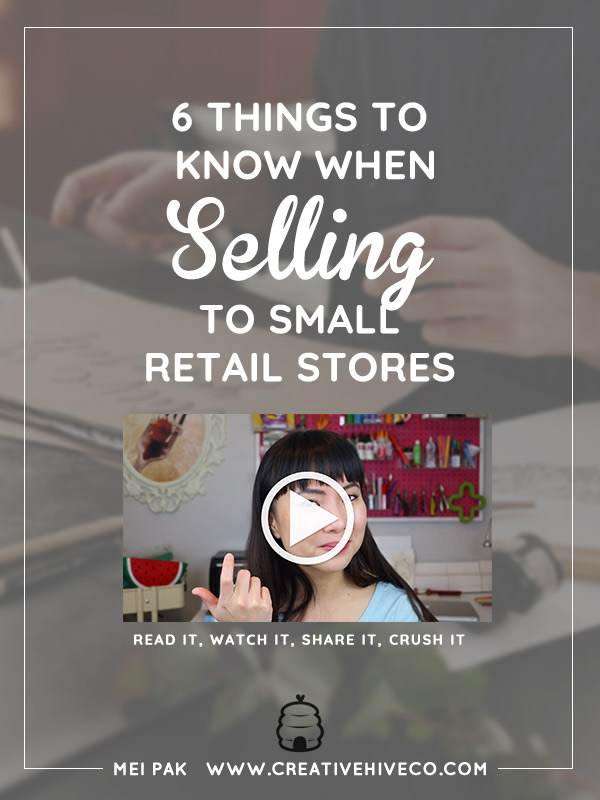
Leave a Comment
Liked this article? Share it!
Unlock a Profitable Handmade Business
in Just 12 Weeks Without Using Etsy
or Social Media
FREE WORKSHOP
This workshop is for anyone who makes and sells a handmade or physical product, including jewelry designers, artists, paper designers, bath & body product makers and more!
What You'll Discover
The #1 mistake people make with Etsy & social media that causes shops to FLOP
The secret to making it with your handmade shop so it's no longer just a hobby
How to make sales in your handmade shop with ease so you can finally get to 6-figures
TAKE ME THERE
Your email address will not be published. Required fields are marked *
Leave a Reply Cancel reply
About
Blog
A Sale A Day
Student Login
Free Class
Contact
Terms
Become A Student
Watch On YouTube
Student Reviews
See My Handmade Shop!
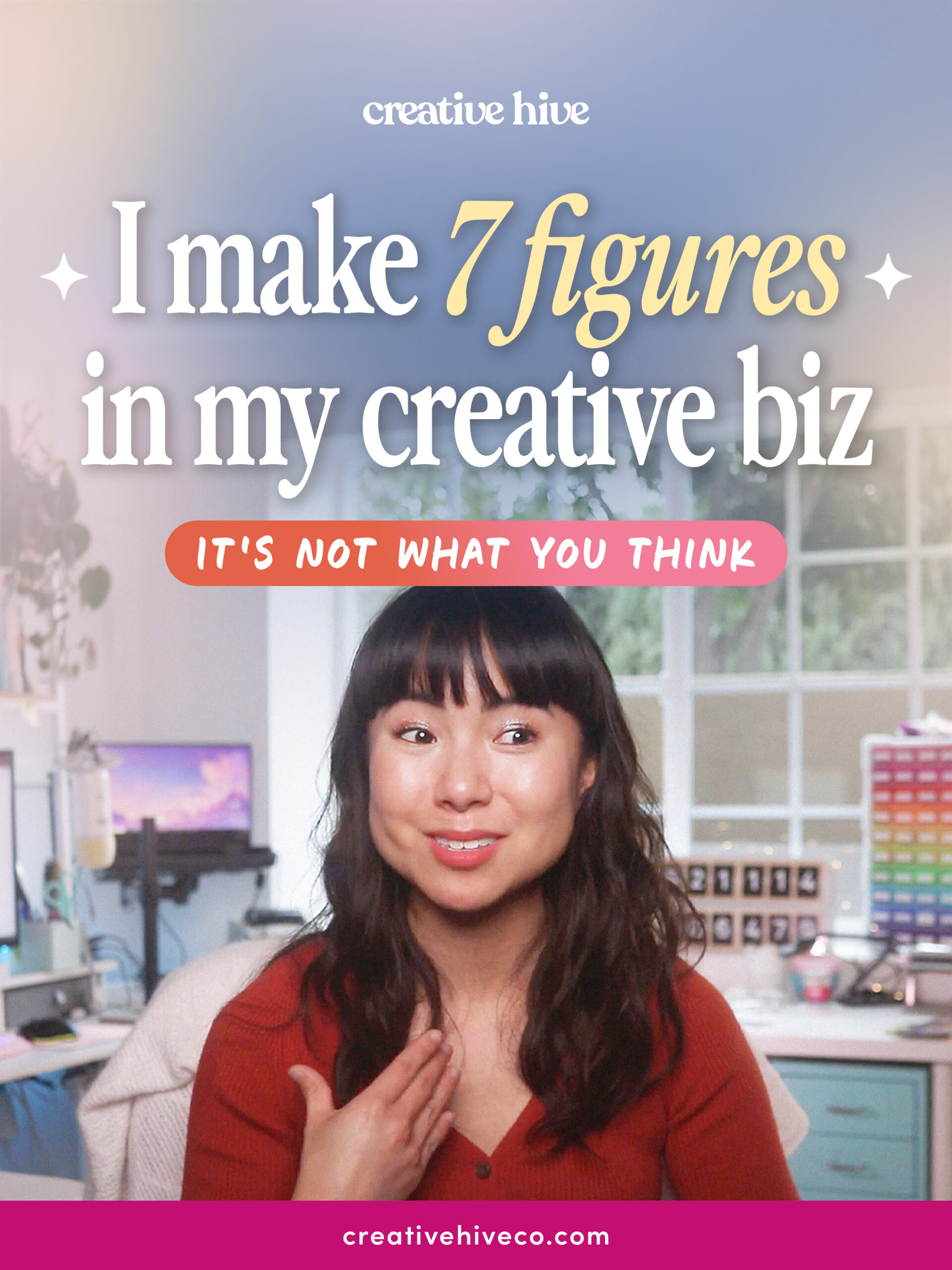
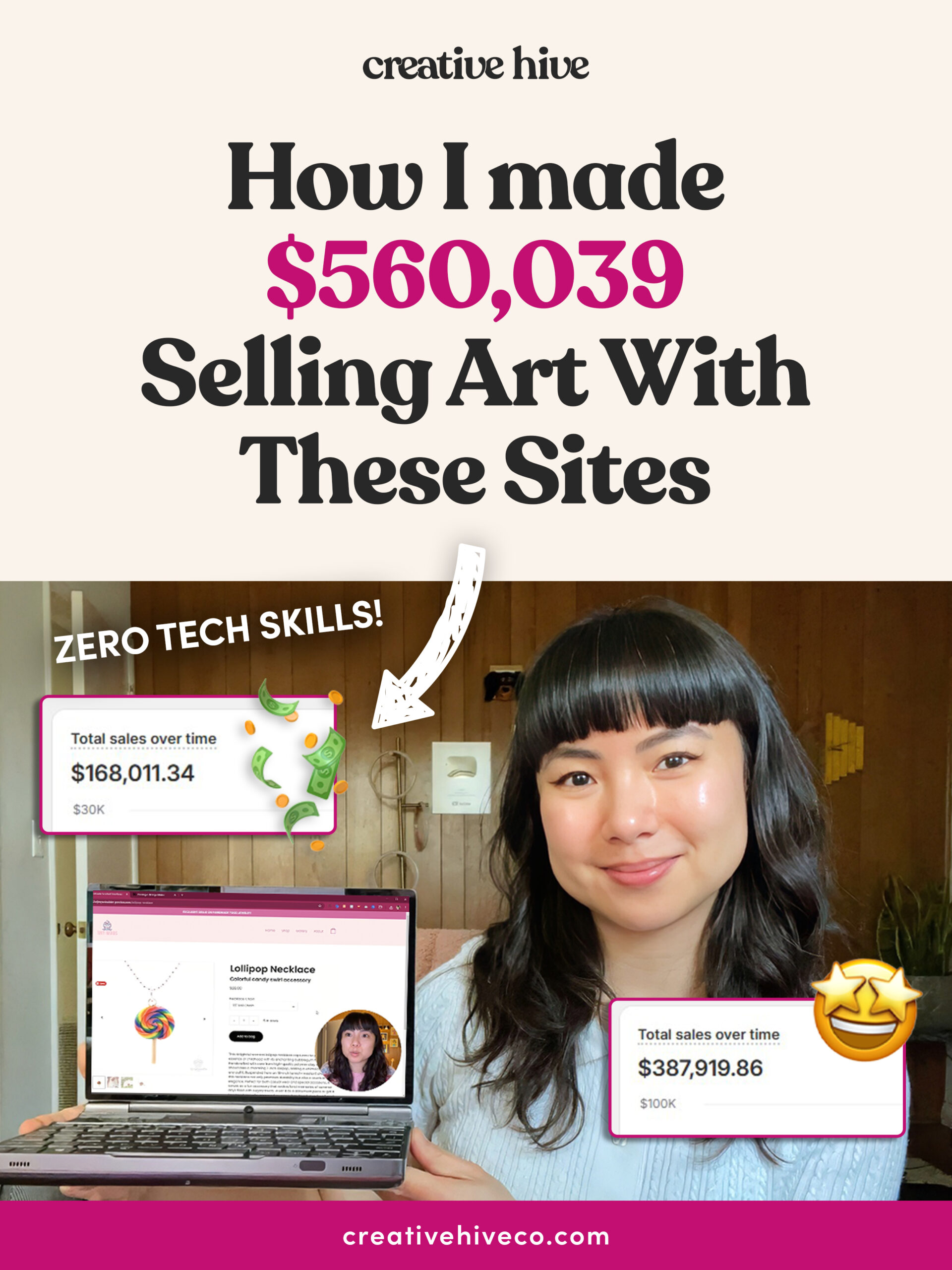
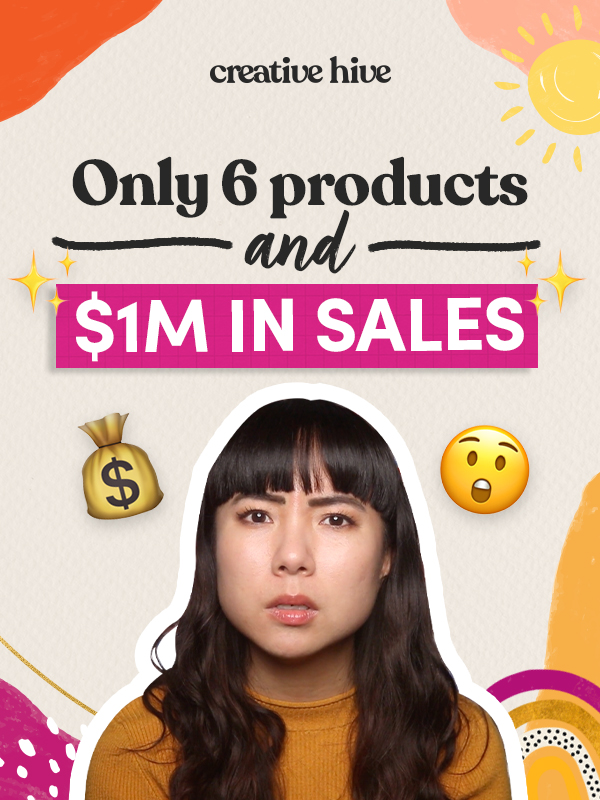
Wholesale can help you build your business and generate new revenue if you can offer a particular product or collection for wholesale buyers. It diversifies your income and gives your firm a roller coaster ride of not knowing when the next transaction will occur. not your style.